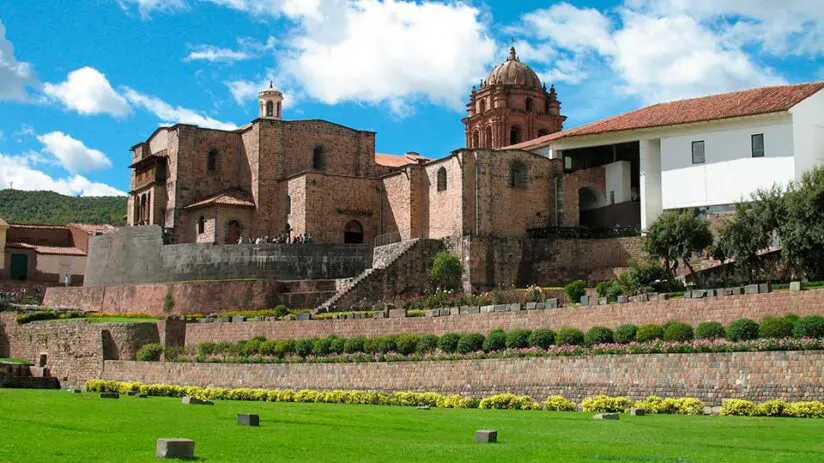Walking the narrow streets of the Imperial City is like visiting an open-air museum. Not in vain, Cusco is considered the Rome of America. Most of the Cusco buildings have significant historical and cultural connotations. The religious complex Coricancha was one of the most sacred and vital temples during the Inca Empire.
It is one of the most surprising tourist spots you can find on a guided tour through the city. Its architecture is a clear example of the conjunction of the Spanish and Inca building styles. It is also a cultural treasure to appreciate. For this reason, with the travel experts of Machu Travel Peru, we have prepared a small article about the beautiful Temple of the Sun.
Everything you need to know about Coricancha
- What was Coricancha?
- Location of Coricancha
- Coricancha history
- Architecture of Coricancha
- Main attractions
- How to get it?
- The Coricancha tour
- Schedules and prices to visit Coricancha
What was Coricancha?
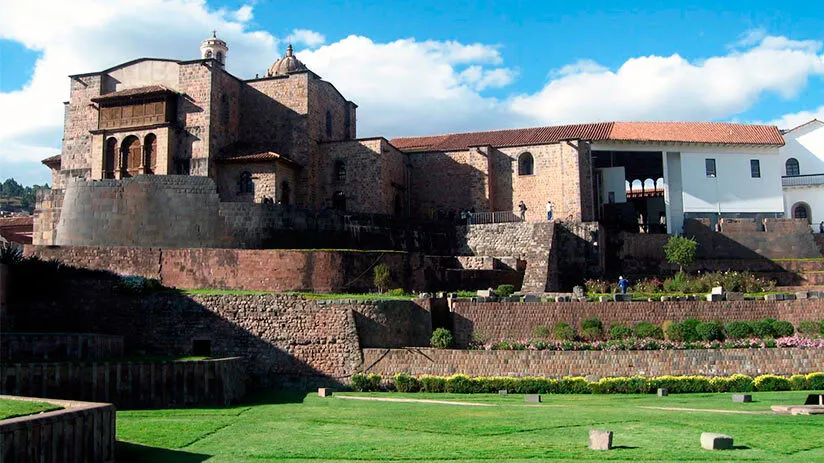
Coricancha was the most important religious temple of Cusco, in the capital of Tawantinsuyo, the territory of the Incas empire. It was built in 1438 by Manco Capac and devoted to the Sun. Over its structure, the Spanish built the current Santo Domingo convent in 1534.
Also, Coricancha was where the highest positions of the Inca hierarchy (like the same Inca, its relatives, the high priest, and high officials) could enter to pay tribute to their chief god, the sun (Inti in English). In other words, it was the most important Inca temple in that period and was even considered a holy land where few people could enter it.
The temple was the religious and political center of the Imperial City. It is included in the list of things to do in Cusco for every tourist who wants to know the beauty of Incas architecture.
Where does its name come from?
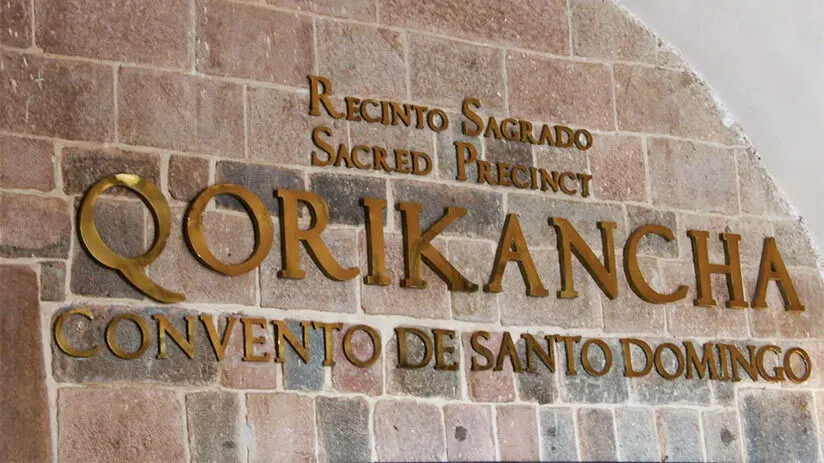
Coricancha is written in diverse forms, such as “Qoricancha”, “Qorikancha”, or “Koricancha”. Either way, the variety of names is accepted among the locals. But, What does Coricancha mean in English?
The word Coricancha is formed by combining two Quechua words. The word “Quri” can be translated to “worked gold”, while “Kancha” can be translated to “Temple” or “Place closed by Walls”. So, it can be assumed that the temple’s name translates to “golden temple” or “golden walls”, among other things.
It was named this because all its walls and gardens were covered in and surrounded by gold and precious metals, which made the place shine. In this sense, Coricancha was one of the most essential Cusco attractions.
A destined temple to Whom?
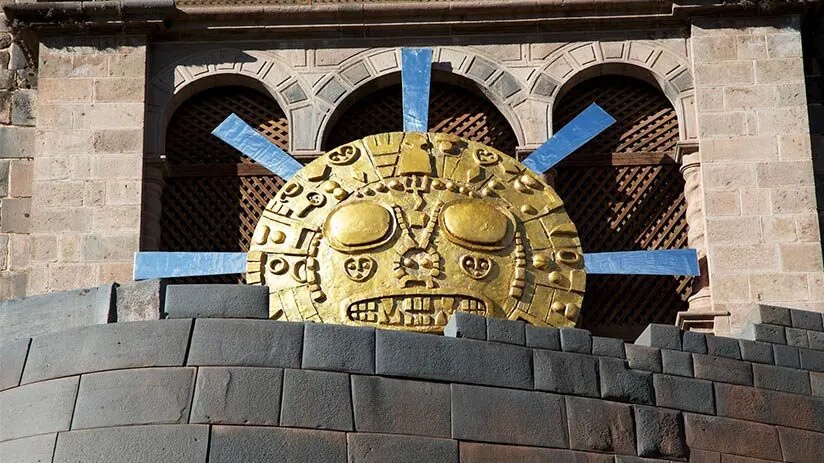
The Temple was dedicated to the most important gods of the Inca Empire, such as Viracocha (creator god) and the goddess of the Moon “Quilla” among others. However, the Sun God “Inti” was the god regent temple and the main deity to pay cult there.
Location of Coricancha
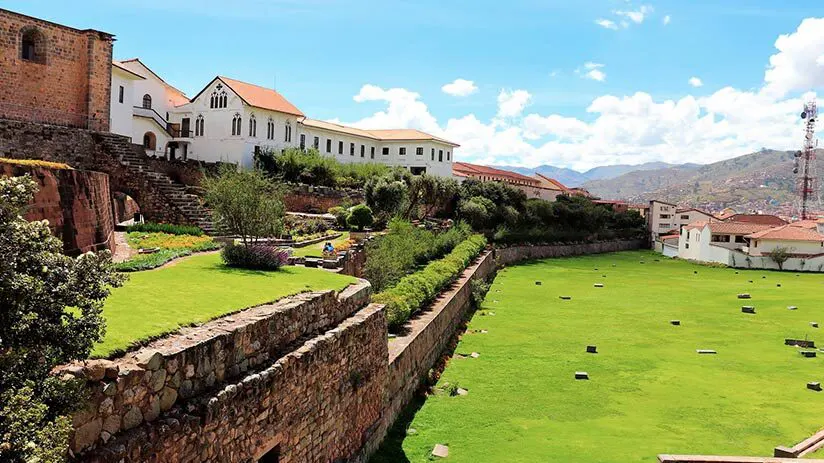
The Coricancha Temple is located at the historic center between Avenida El Sol and Santo Domingo streets in Cusco City. Note that only the original foundations of Coricancha remain. This fact is due to Spanish conquerors, who destroyed the temple (As a form of overthrowing pagan religious beliefs and imposing Christianity).
In this way, the current is the convent of Santo Domingo was built over the ancient temple rest.
Coricancha history
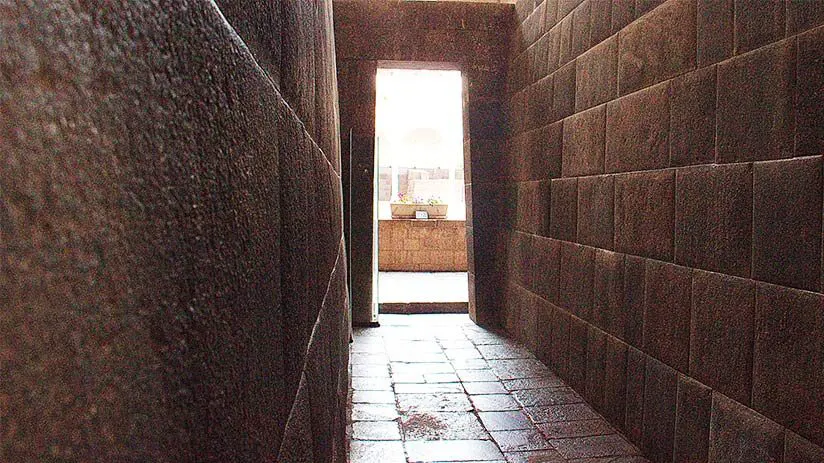
Who built the Coricancha? It is one of the first questions that comes to mind. There has been a temple in the exact location called Inticancha since Manco Capac (the first Inca, chronologically). “Inti” means Sun, and “Cancha” means square. Its origin is being researched at this moment.
Despite some scholars affirming that this temple already existed before the Incas age, others say that Inticancha was a Manco Capac’s construction. Either way, it was not until the arrival of Pachacútec Inca Yupanqui that the construction reached its colossal size and received the name Coricancha. Pachacutec (world transformer in English) rebuilt the temple, as did other important Inca constructions.
In the same way, as time passed, the Inca leader Huayna Capac gave importance to the site. The Inca ordered the nobility and elite of the Empire to travel to the temple to pay tribute to the Inti God or Punchao (a gold sculpture of a child seated, who represented the noon sun). Some historians affirm that the foreign pilgrims had to take off their flip-flops and sandals and enter the enclosure barefoot because Coricancha was considered the Holy Land. This led to a concentration of influential people in the capital. That eventually strengthened the Empire and allowed it to favor the state in its different projects.
The arrival of the Spaniards: The beginning of the end
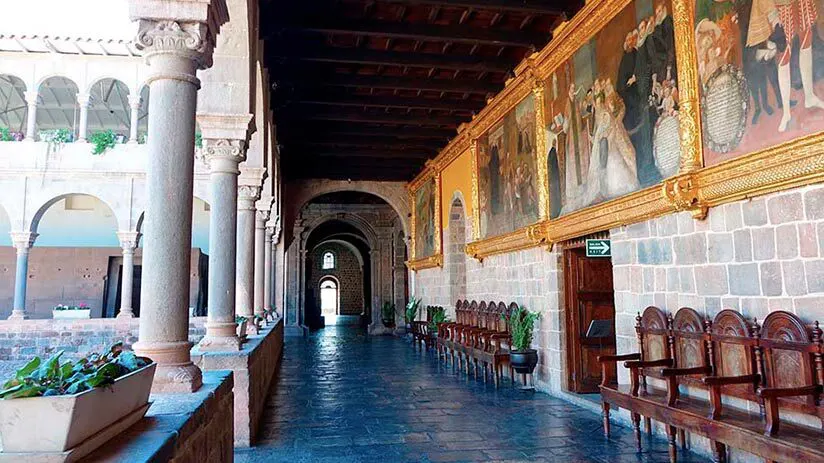
Before the arrival of the conquerors, the entire complex had numerous rooms, each with different functions. When the Spanish arrived at Inca’s capital in November 1533, they were astonished by the temple’s grandeur. They had never seen so much gold before in one place. All the precious metals made the area shine considerably.
Therefore, when the Spanish conquerors arrived, they were in charge of looting all the valuables and building another construction site at the exact temple location. But what was built over the ruins of Coricancha?
After the arrival of the conquerors, the temple was destroyed and looted to later build on its foundations the Christian monastery of Santo Domingo in an apparent attempt to replace religion. Historians affirm that the indoctrination of the Christian faith over pagan cultures was the great excuse of the Spanish to destroy the Inca’s temples and constructions.
Coricancha nowadays
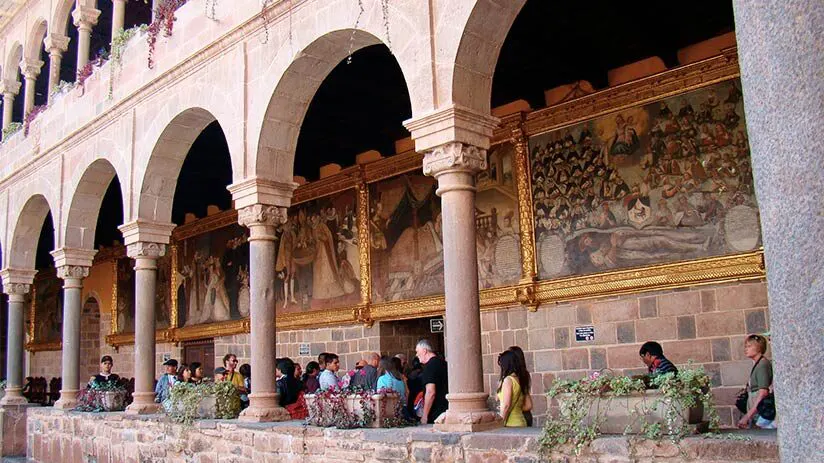
Today, Coricancha is one of the leading destinations on the Cusco tourist map. The harmonious mixture of the ancient Inca walls with the Spanish colonial architecture gives this building a unique touch. It is an unmissable point for tourists seeking to know Cusco and its original essence.
Architecture of Coricancha
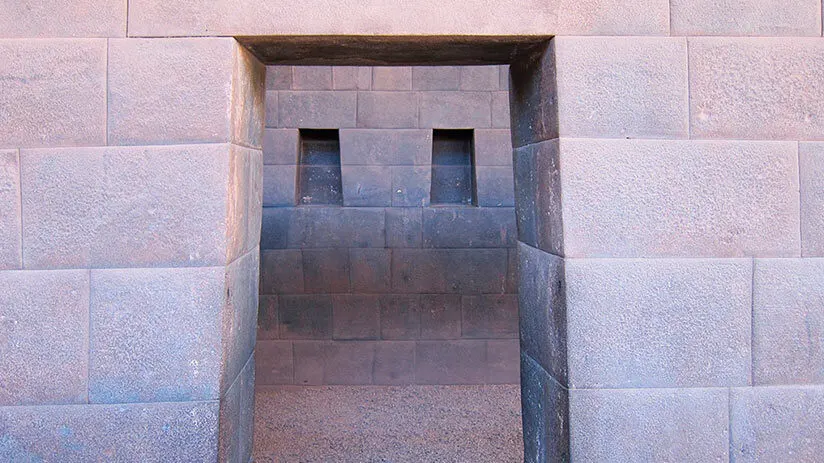
The Incas built the Coricancha using techniques and architectural styles that were common to them, and that can be seen repeated in other archaeological sites. Some of its most prominent styles include the trapezoidal shape of its structures, the vertical inclination of the walls, irregular shapes, and rounded edges. All the stones used are autochthonous, including diorite, andesite, and calcareous rocks.
The entire Coricancha is a clear example of the excellent stonework that the Incas previously dominated. The temple’s ingenuity and masonry skills are lovely. It is designed with typical Inca symmetry in mind. One of the most impressive characteristics of the Coricancha and the Inca buildings is their ability to withstand natural disasters such as earthquakes.
Sacred location
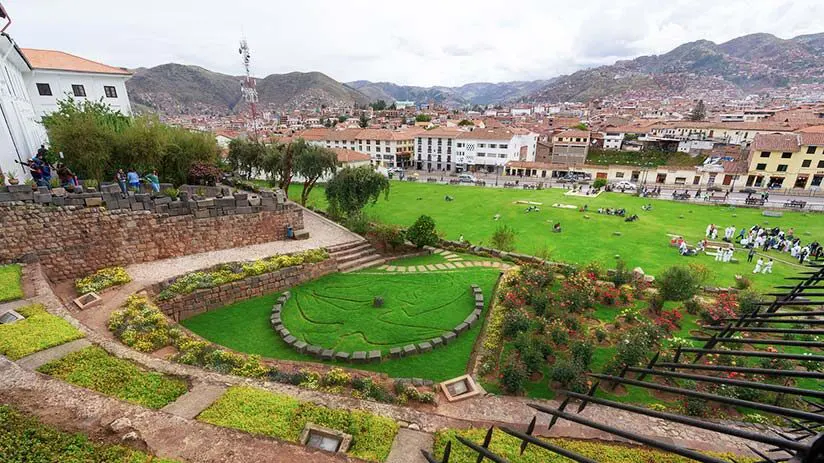
The Coricancha is not one of the many museums in Cusco, but it could be considered as such. The site’s design was thought in such a way that from above, it resembled a sun with rays shining in all directions. It is due to the Incas having an architecture harmoniously mixed with their religion and way of thinking.
For this reason, the city of Cusco was designed like a jaguar, with Coricancha at the tail and Sacsayhuaman (another excellent Inca construction) at the head. It was also built where the Tullamayo and Huantanay rivers, the two crucial Cusco rivers, meet.
This ancient temple was the center of the city’s various religious activities and the central vortex of the Inca Ceque system. Ceques were lines or stripes used to connect the 328 Huacas or Sanctuaries in the surroundings between them and Cusco. Therefore, the design of the Coricancha was intended to resemble that of a Sun with rays shining in all directions.
It is known that most of these sacred roads radiated from Cusco and pointed to the main “four quarters” of the Inca Empire. And it is known with certainty that most pilgrimage lines departed from Coricancha. Therefore, these Ceques extended from the corners and closest structures of the Coricancha to everywhere in Tawantinsuyo.
Design of the Coricancha complex
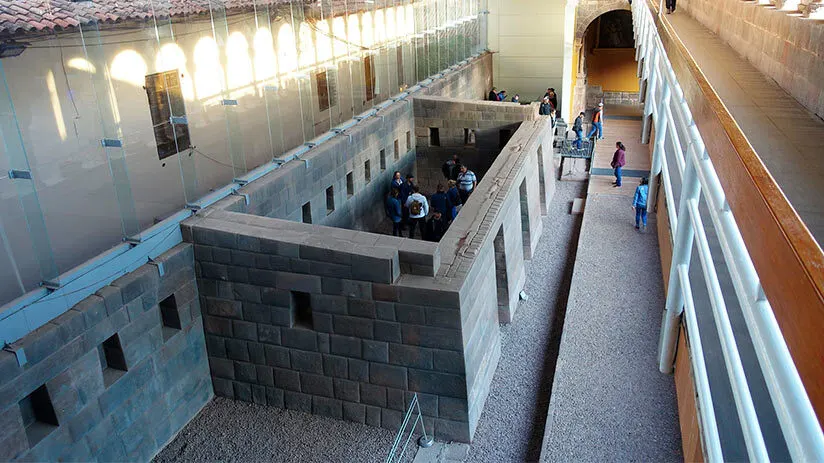
Those who wrote the chronicles of the conquest affirmed that the Coricancha complex was designed according to sky schemes and, consequently, was one of the top attractions in Cusco when the Spanish came. Its four temples surrounded a central plaza.
These four temples were dedicated to the Sun (Inti), the moon (Killa), the stars (Chasca), and the thunder or rainbow (Illapa). But to the west of the complex, there was another plaza with a small shrine dedicated to Viracocha. All these shrines were surrounded by a superbly constructed wall that divided the Sacred Garden of the Sun from the rest of the site.
Main attractions
a) Sun Temple
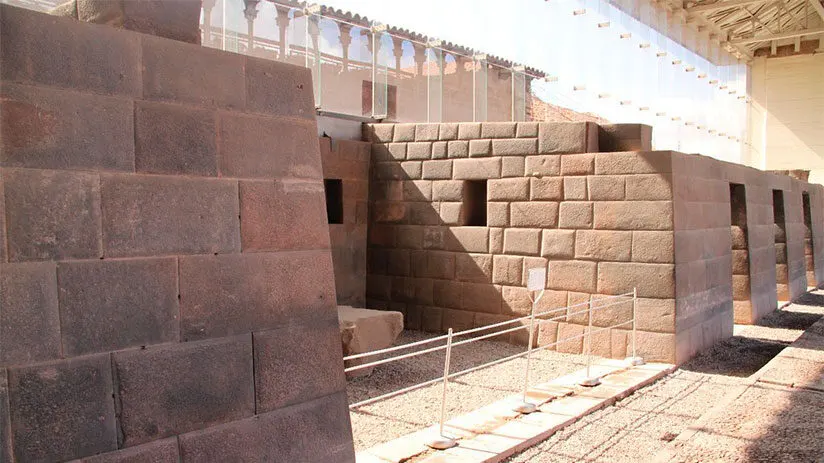
The Temple of the Sun was the most important in the enclosure. Both its outer and inner walls were covered in gold, which was considered the sweat of the Sun in Inca times.
Besides, there was a gold statue of the god Inti, encrusted with jewels and precious stones. This statue represented the god Inti in his form of noon (Punchao), the main deity worshiped in the enclosure. From his shoulders and head, you could see the rays of the sun gout to every side (made of gold). This statue was taken outside daily and returned to the sanctuary each night.
b) Viracocha garden
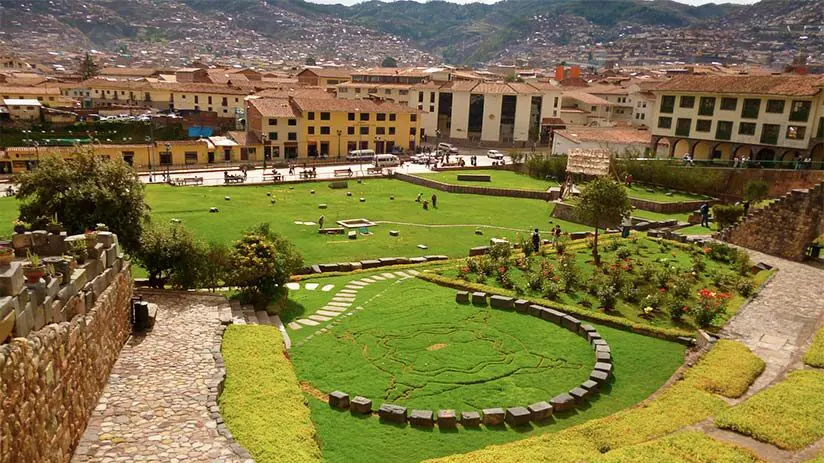
The temple garden was also a great tribute to another Inca deity, Viracocha. Besides the Sun god or Inti, the Incas had their “doer of all” god, Wiracocha. Many regions and parcels of the Tawantinsuyo (the name of the Inca empire’s land) were dedicated to honoring this god. But the Coricancha garden was especially a tribute to the deity.
Everything was decorated with gold and silver. In addition to a large field of corn, there were life-size models of jaguars, shepherds, llamas, monkeys, and many other animals made of precious metals. Sadly, many of these treasures got lost or looted. Today, we only have a few pieces of evidence of how majestic this place once was.
c) The alternative temples
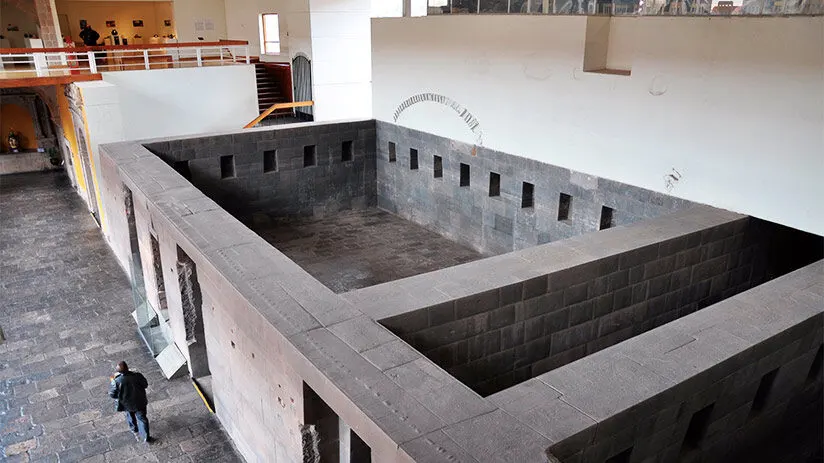
These constructions consisted of four rectangular structures positioned symmetrically around a central plaza. For this reason, the design of the Coricancha has been compared with the designs of other Temples of the Sun, like Llactapata and Pachacamac. In addition, it is believed that rituals associated with the year’s solstices were celebrated in Coricancha.
In addition, its walls were built with trapezoidal shapes and a slight vertical inclination, an architectural form reserved only for the nobility and elite of the Incas. According to the chronicles, its interior walls were entirely covered by gold. Around the Coricancha square, five other temples, or Wasi as they were known, were in a hierarchical order.
- First, there was the temple dedicated to the creator god Viracocha.
- Another to Quilla, the goddess of the Moon.
- After that, the Chaska-Qoylor or Venus temple.
- Following, there was the temple for the thunder god Illapa.
- Finally, the rainbow god Cuichu.
d) Quilla temple (Moon)
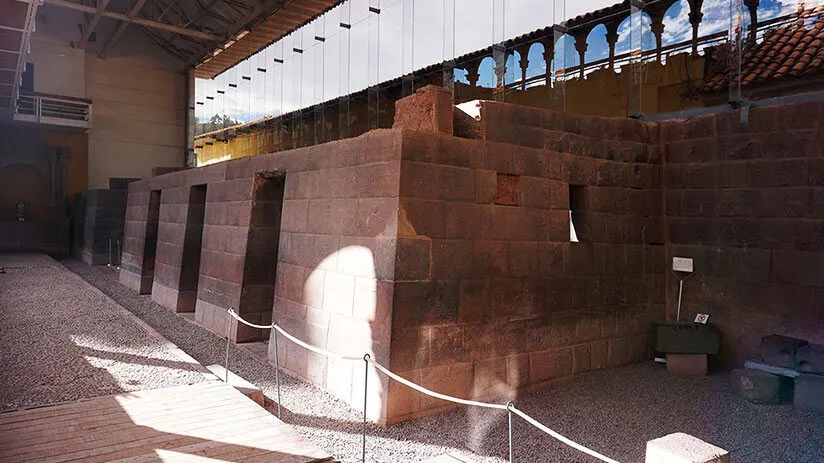
Just as the Inti temple was covered with gold, the Quilla temple was covered with silver. Silver was considered the tears of the Moon. As with the temple to the god Inti, each of the Wasis had a statue of the deity represented, in addition to precious objects, works of art, and other objects left in honor of the gods.
e) mummies enclosure
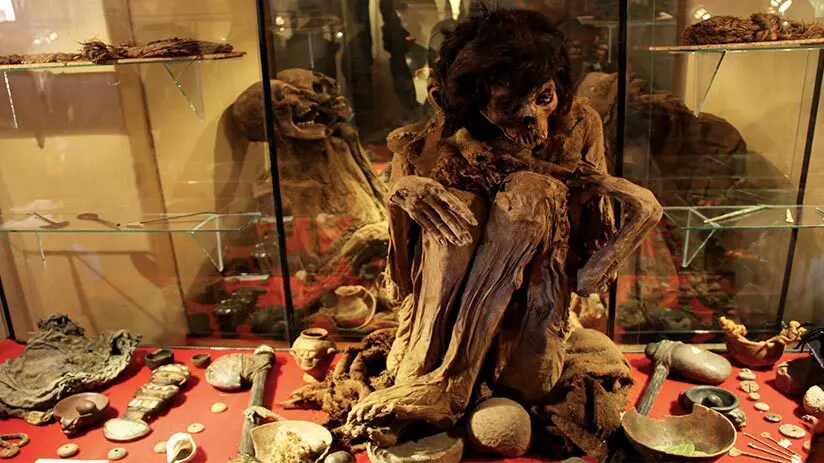
There was even a space dedicated to the mummified remains of the ancient Inca emperors and their wives. The mummies were removed during special ceremonies such as solstices. These mummies were dressed in fine clothing, and offerings were made concerning their achievements. There were also some residences and dwellings for the high priests, while other rooms were used as warehouses for different artistic and religious treasures.
Nowadays Coricancha
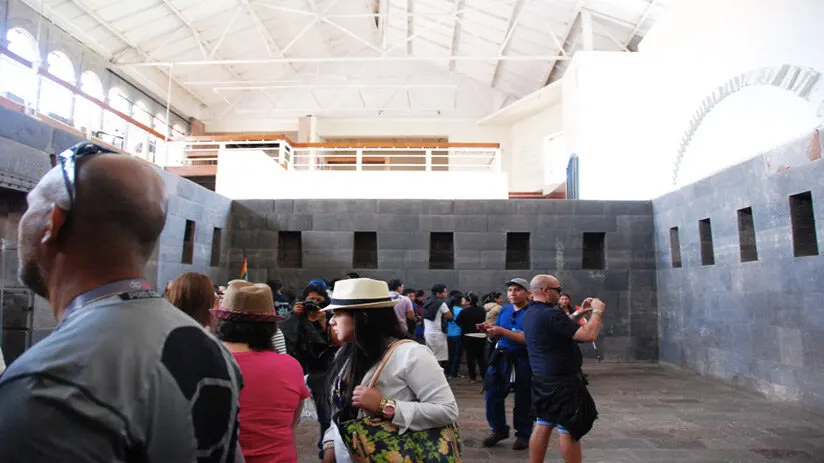
Today, one of the best attributes of the Coricancha is its evident fusion of these two opposite worlds that were known. After the looting and destruction of the Temple, the Spanish began to build the templo de Santo Domingo on the foundations.
The Church’s architecture is of apparent Spanish and colonial influence, with specific Baroque details. This harmonious mixture of Inca architecture and that of the Emerging Republic shows the Spanish’s apparent need to evangelize and establish their belief system at the time. Currently, in the Qoricancha, the feast of worship of the sun god, known as the “Inti Raymi,” is celebrated and commemorated.
How to get it?
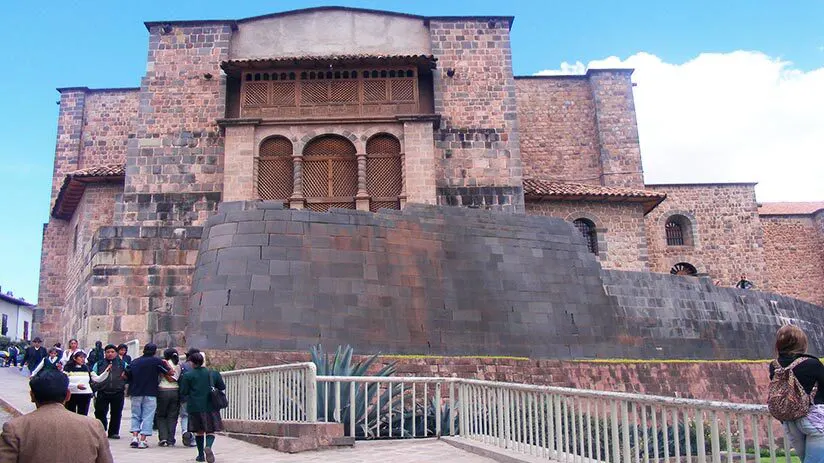
It is effortless to get to Coricancha; you can get there from the Cusco main square, heading towards Avenida El Sol, and walking no more than 400 meters in the south direction. Finally, you will arrive at the archaeological site, recognizable from a considerable distance. It is situated over Santo Domingo Street.
Another option is to take a taxi and indicate that you want to get to Coricancha. Even some public buses tend to stop very near to the entrance, so you can also take advantage of local transport on weekends and holidays (During the week, it is not recommended to take them).
The Coricancha tour
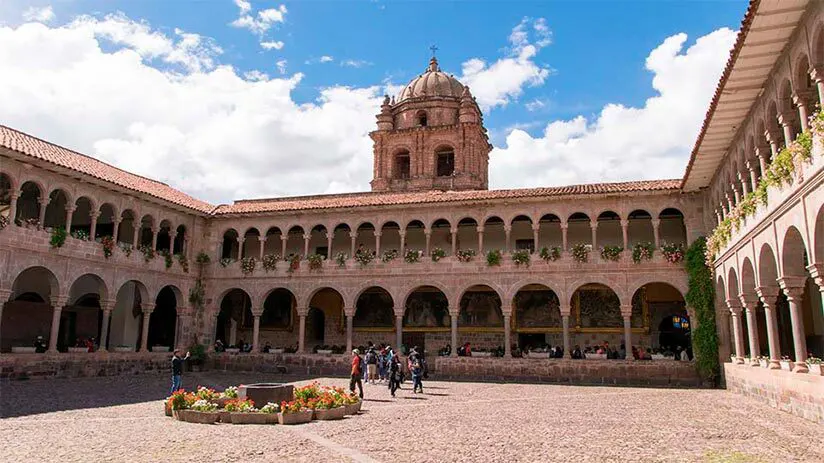
You can visit the Coricancha through a guided tour of the city or merely go to the Temple on your own and buy your entrance ticket at the door. Besides, you can check out our other Cusco travel tips and get to know other unique places during one of our city-guided tours. Don’t forget that organization and acclimatization are useful tips before you visit Cusco.
Through a City Tour
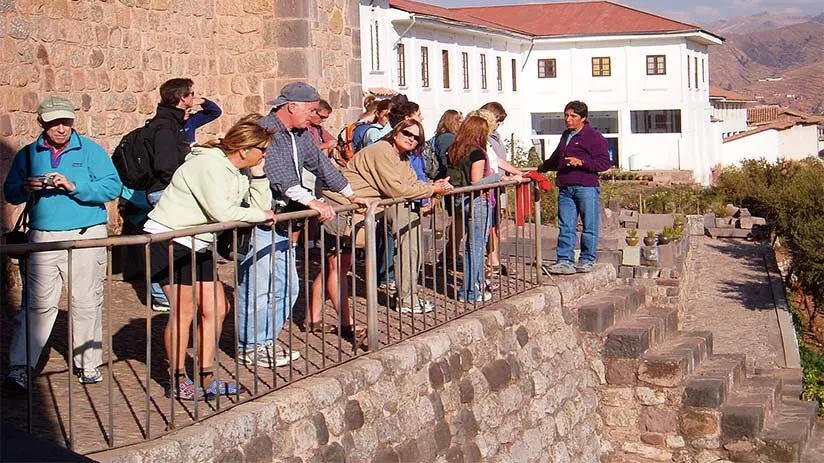
In general, the guided visit of Coricancha is included in a more complete visit to Cusco called the City Tour, which lasts four hours. This tour usually starts from the Plaza de Armas and includes entrance fees and transportation. However, some tours may vary in star-point depending on the travel agency.
- You will most likely visit the beautiful Cusco Cathedral for around 45 minutes.
- From here, walk 5 minutes to the incredible Coricancha Temple. (The tour lasts another 45 minutes).
- Following, you will have to take your transportation (included in most City Tours packages) to the Sacsayhuaman complex to visit the four Inca archaeological sites surrounding the city: Sacsayhuaman, Qenqo, Puca Pucara, and Tambomachay. (The tour lasts two hours).
By yourself
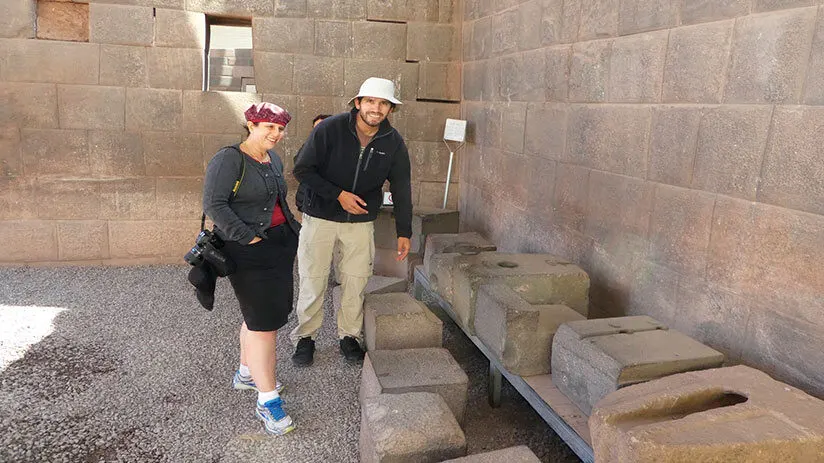
If you want to visit this beautiful temple by yourself, you can start the tour from the main square. You can go southeast of the square to the Portal de Belén. Then, you continue along Loreto Street, straight to Pampa de Castillo. Then, you turn left down Calle Santo Domingo, where you can see the wonderful temple.
The direct entry ticket to the Coricancha costs 15 soles for foreign people and eight soles per child, so you have no excuse to miss out on this fantastic site. It is very straightforward to access, and you won’t have to worry about anything.
Also, if you wonder if Cusco is Safe to travel to, you don’t have to worry, as the City is continually taking security measures for tourists and travelers. As long as you are cautious, there is no reason not to enjoy this fantastic ancestral city.
Schedules and prices to visit Coricancha
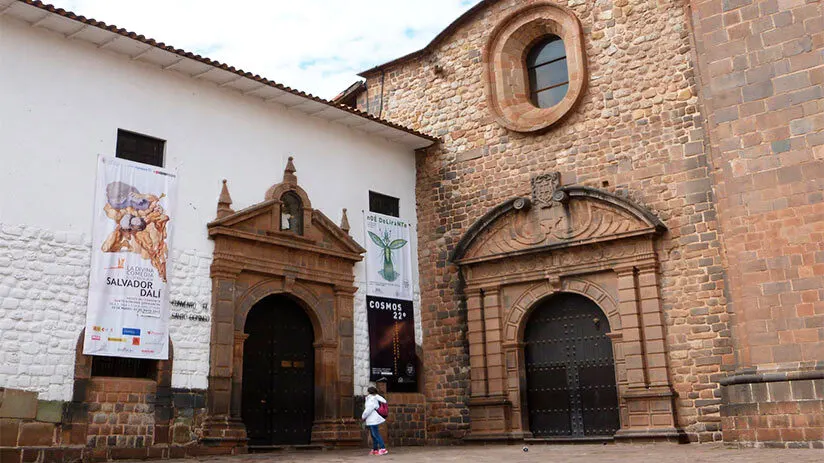
If you are looking to visit the beautiful Coricancha temple, it is available every day of the week.
- It is open from 8.30 am to 5:30 pm from Monday to Saturday.
- On Sundays, it is only open from 2:00 pm to 5:00 pm.
Regarding the entrance fees:
- Per foreign adult person, $ 4.
- Per foreign child, $ 2.
- For national (Peruvian) visitant, $ 3.
Coricancha is a place that you definitely cannot miss out on. It is one of the many mandatory stops you will experience on the walking tour in Cusco, not only because of the historical treasure it represents but also because of its impressive constructions. Discovering the hidden magic of the most important temple of the ancient Inca Empire is a unique experience.
“I HAVEN’T BEEN EVERYWHERE, BUT IT’S ON MY LIST”
We hope, together with the Machu Travel Peru team, to have been helpful. As you will see, the Coricancha is a must-see for newcomers. This marvelous temple is located in the historic center and is a mandatory stop on your city tour. Visit this fascinating place and learn more about the interesting Inca culture. If you want to know more about our different routes, you can consult with our team of qualified advisers. They will happily help you organize the wonderful trip of your dreams. You can start to learn about our private city tours with them.
